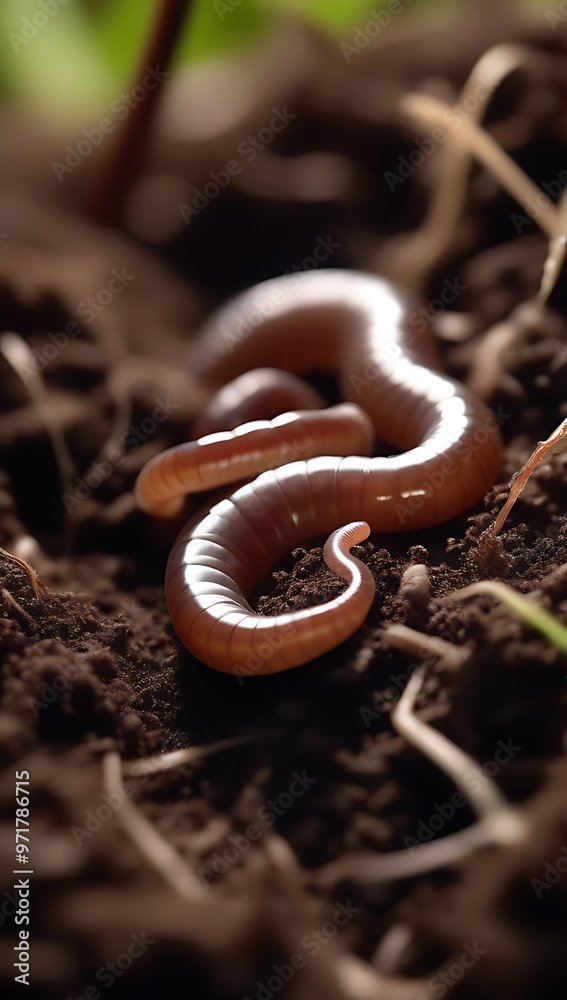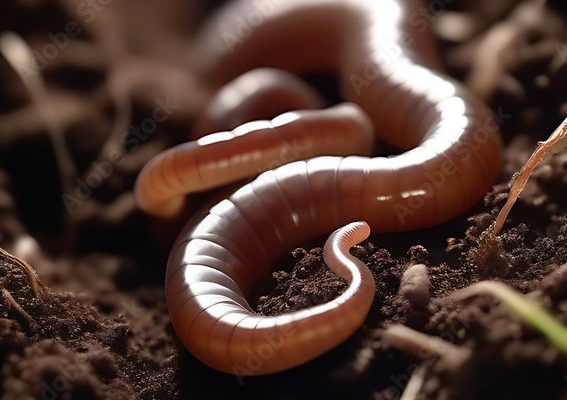
When soil conditions are just right, earthworms can thrive. Believe it or not, it’s not just about having dirt in your backyard. Factors like moisture, temperature, pH levels, and organic matter all play a role. It’s almost like creating a cozy home for them—your garden can become a perfect paradise. So, let’s dig in and explore what makes the soil ideal for these amazing creatures.
The Importance of Soil Structure
Soil structure is like the foundation of a house. If the structure isn’t solid, everything above it may crumble. Healthy earthworm populations depend heavily on a well-structured soil because it affects how easily they can move and how well air and water can circulate.
Earthworms prefer soil that is crumbly rather than compacted. Compact soil can be a bit like trying to walk in thick mud—it’s hard to move through. A well-structured soil has spaces or pores that allow for air and water movement, which is essential for earthworm survival. When soil is compacted, it tends to hold too much water or become too dry, both of which can harm earthworms.
To improve your soil structure, you can add organic matter like compost or leaf litter. This not only provides nutrients but also creates those crucial air pockets. Over time, as earthworms break down the organic matter, they help to further improve the soil structure. It’s really a win-win situation!
Moisture Levels Matter
You might be wondering just how much moisture earthworms need. Well, they’re like Goldilocks—they want it neither too wet nor too dry, but just right! Earthworms breathe through their skin, which means they need moisture to survive. Without it, they can easily dry out and die.
Ideal moisture levels are usually between 40% and 60%. When the soil is too dry, earthworms may burrow deep down into the ground, making them hard to find. And if the soil is too wet, they risk drowning!
A good rule of thumb is to keep the soil slightly moist. You can test this by grabbing a handful of soil—if it crumbles apart, it’s too dry. If it forms a ball and drips water, it’s too wet. The perfect consistency is when it holds together but doesn’t drip. Consider using mulch to retain moisture while preventing the top layer of soil from drying out too quickly.
Understanding Soil pH
Just like us, earthworms have preferences when it comes to acidity. Soil pH is a measure of how acidic or alkaline the soil is. Generally, earthworms prefer neutral to slightly alkaline soil, around a pH of 6 to 7.5. If the soil is too acidic (think of it as a sour lemon), the earthworms might not thrive.
How can you check your soil’s pH? You can purchase a simple pH testing kit from a garden center. If you find your soil is on the acidic side, you can amend it with lime, which helps increase alkalinity. On the flip side, if it’s too alkaline, adding organic materials like compost can help balance it.
By keeping an eye on soil pH, you ensure that your earthworm population remains healthy and active—after all, they’re not fans of extreme conditions!
The Role of Organic Matter
Organic matter is like a buffet for earthworms—it’s where they find their favorite food! When you enrich your soil with organic materials like compost, decaying leaves, or even kitchen scraps, you provide nourishment for earthworms. As they munch on this organic matter, they break it down into simpler nutrients that plants can use.
But it’s not just about food; organic matter also plays a vital role in improving soil structure and moisture retention. It creates a lovely environment for earthworms to thrive because it helps maintain the right moisture levels while providing essential nutrients.
To keep things lively for your earthworms, aim to add at least 25% organic matter to your soil. You can do this easily by layering compost or using a mulching technique. Over time, the earthworms will transform this organic matter into rich, fertile soil.
Temperature: The Goldilocks Zone
Temperature is another key player in keeping your earthworm population buzzing with activity. Earthworms are sensitive to temperature extremes—too hot or too cold can send them into a spiral. Generally, they thrive in temperatures around 60°F to 75°F (15°C to 24°C).
In hotter climates, earthworms might burrow deeper into the soil during the hottest parts of the day. This behavior helps them escape the heat and stay moist. On the flip side, during cold winters, they tend to slow down and may become dormant until temperatures rise again.
If you want to keep your earthworms cozy, consider using shade cloths in sunnier areas or insulating mulch in colder regions. This creates a more stable environment, allowing earthworms to thrive year-round.
Choosing the Right Earthworm Species
Not all earthworms are created equal! Different species thrive under different soil conditions. For example, **Lumbricus terrestris**, commonly known as the nightcrawler, is great for deep soil and prefers cooler, moist conditions. On the other hand, species like **Eisenia fetida** (red wigglers) are often found closer to the surface and thrive in compost heaps with a bit more heat and moisture.
When starting or boosting your earthworm population, it’s helpful to choose the right species for your soil type. Do a little research on the species that are native to your area or are best suited for the conditions you can provide. This way, you can ensure they’ll be happy and productive.
Whether you’re adding worms to a new garden or enhancing an existing one, knowing which species to choose makes a big difference.
Creating a Balanced Ecosystem
A healthy earthworm population contributes to the overall health of your garden ecosystem. They improve soil structure, increase nutrient levels, and help with water retention. But fostering a balanced ecosystem doesn’t just mean taking care of your worms—it requires attention to the entire environment.
Avoid using synthetic chemicals and pesticides that could harm earthworms and other beneficial organisms. Instead, focus on natural pest control methods and organic fertilizers. This will not only protect your worms but will also help create a thriving garden that’s resistant to pests and diseases.
Incorporating companion planting can also be beneficial. Some plants can attract beneficial insects or provide shade, creating a more favorable environment for earthworms. The more diverse your garden ecosystem, the healthier it will be!
In conclusion, nurturing a healthy population of earthworms is all about understanding the *best soil conditions*. By focusing on improving soil structure, moisture levels, pH, and organic matter, you can create a thriving environment. Add in the right species and cultivate an overall balanced ecosystem, and you’re well on your way to a garden that’s not just beautiful but also bustling with life beneath the surface. So, grab your gardening gloves, dig in, and watch your garden flourish with the help of those incredible little earthworms!

